ヒガンバナは開花時に葉がなく、展葉時に花がないので別名「葉見ず花見ず」。鱗茎は毒性があるものの、デンプンを豊富に含む救荒食です。
The red spider lily has no leaves at the time of flowering and no flowers at the time of exhibition, so it is also known as “no leaves and no flowers”. Bulbs are toxic but starch-rich famine food.
【仮名】ヒガンバナ, マンジュシャゲ, セキサン
【和名】彼岸花, 曼珠沙華, 石蒜
【英名】Red Spider Lily, Spider Lily
【学名】Lycoris radiata
【誕生】09/ 20, 09/ 23
【開花】09月
【花色】White, Red
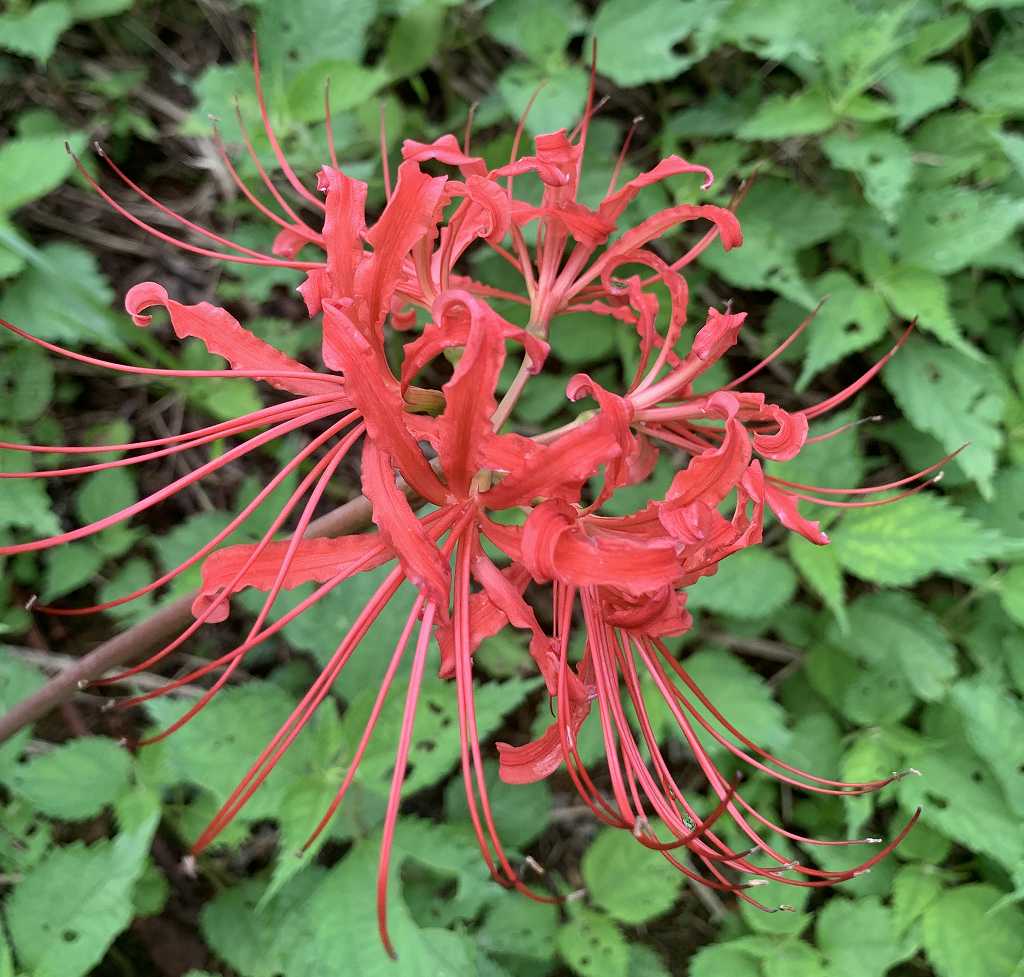

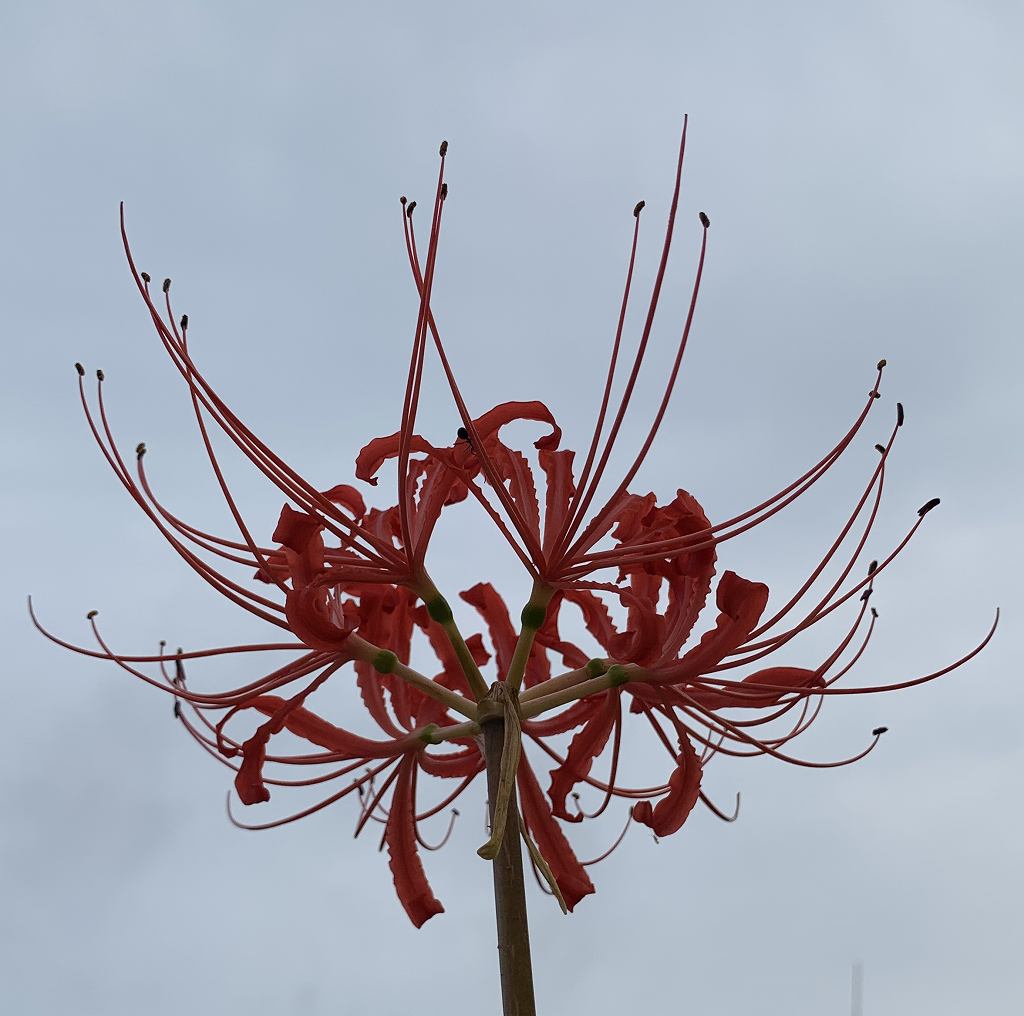
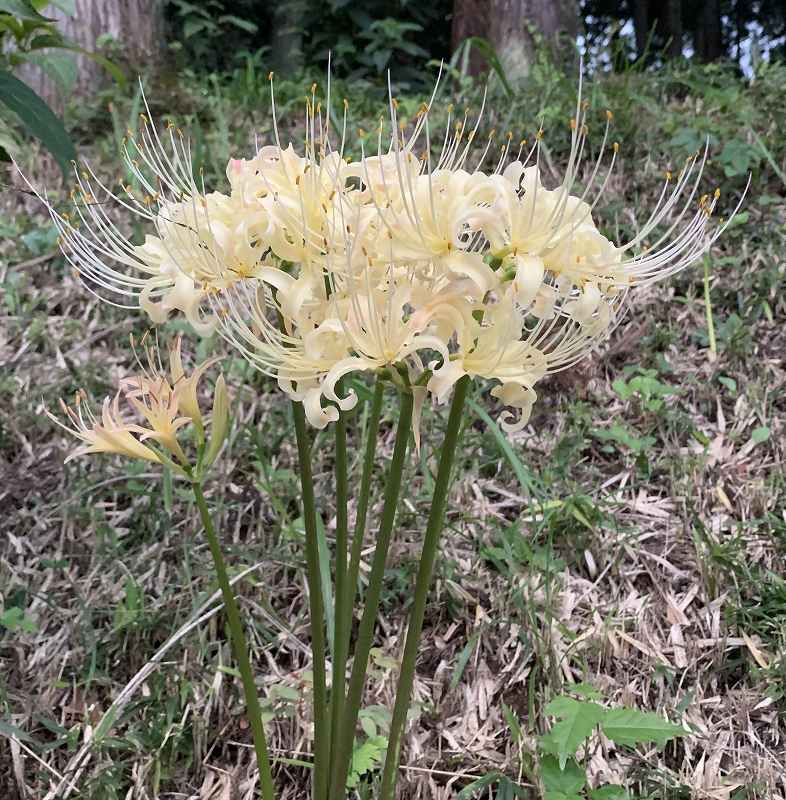
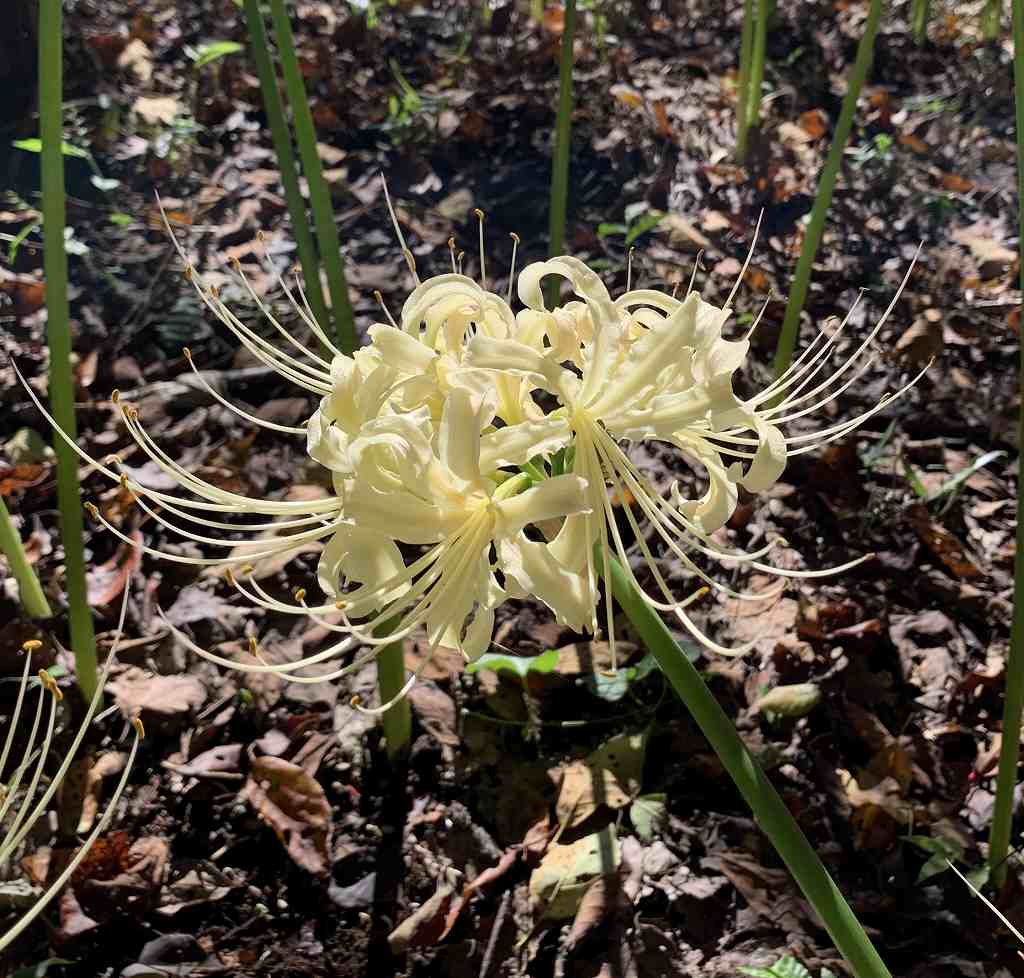
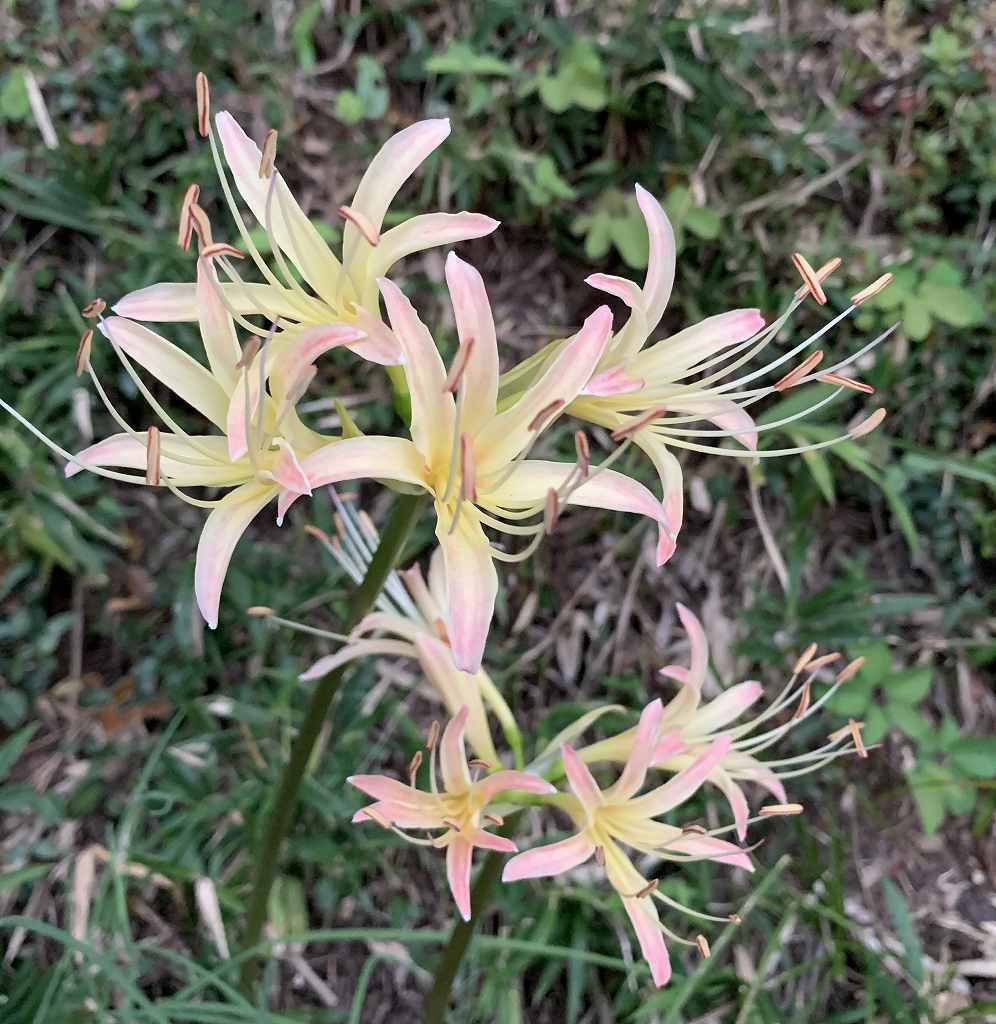
ヒガンバナ
ヒガンバナの生態
ヒガンバナはヒガンバナ科ヒガンバナ属の多年草です。原産地は中国大陸で、日本列島には有史以前に渡来。北海道~南西諸島の各地で野生化し、土手、道端、畦、墓地など、人の手が入ったところに生えています。もし人気のない山林に生えていたら、そこは昔、人里だったところ。
ヒガンバナの効用
ヒガンバナは水田の畦や墓地に多く生えています。それらは人為的に植えられたもの。水田の畦はネズミ、モグラなど、穴を作って水漏れを起こす動物が有毒な鱗茎を嫌って寄り付かないようにするためです。墓地は土葬後の遺体に動物たちを近づけないように。虫除けにもなります。
ヒガンバナの形態
ヒガンバナは葉なしに花茎を伸ばします。花は細長く反り返った花弁が6枚、長く突き出た雄しべが6本、雌しべが1本。花後に花茎がなくなると、濃緑色で光沢のある細長い葉が伸び出して冬を越し、初夏に枯凋。地下には卵形の黒い鱗茎があり、太くて白いヒゲ根が生えています。
ヒガンバナの名前
ヒガンバナの名前の由来は彼岸頃に開花するからです。また、有毒なので食べると彼岸(死者の国)に行くため。さらに、飢饉で餓えが凌げる「悲願」の救荒食だからです。属名「リコリス」はギリシャの女神の名前。種名「ラジアータ」は放射状という意味で花の形を表しています。
ヒガンバナの別名
ヒガンバナの別名「曼珠沙華」は梵語で「赤い花」という意味。開花時に葉がなく展葉時に花がないので「葉見ず花見ず」とも呼ばれます。そのほか「葬式花」「墓花」「死人花」「地獄花」「幽霊花」「火事花」「蛇花」「剃刀花」「狐花」「捨て子花」「灯籠花」「天蓋花」など。
ヒガンバナの毒性
ヒガンバナには毒性があります。特に鱗茎はアルカロイド系の成分「リコリン」のほか、「ガランタミン」「セキサニン」「ホモリコリン」も含有。リコリンは属名に由来し、経口摂取で流涎や吐き気、腹痛、下痢を起こし、重症になると中枢神経が麻痺して死に至ることもあります。
ヒガンバナの食用
ヒガンバナの鱗茎はデンプンを豊富に含有。毒性のあるリコリンは水溶性なので、すり潰して長時間水に晒して流せば無害化できます。そのため、救荒作物として各地に植えられ、飢饉や戦争などの非常時に食用。また、鱗茎は「石蒜」という生薬で、かつて製薬原料にもなりました。
ヒガンバナの逸話
ヒガンバナは花が燃え盛る炎のように見えるため、「採ると家が火事になる」という言い伝えがあります。しかし、これは有毒植物に子供が触るのを戒めるため。俳句で「彼岸花」「曼殊沙華」は秋の季語、花言葉は「情熱」「独立」「再会」「諦め」「悲しい思い出」「旅情」です。
Red Spider Lily
Red spider lily is a perennial plant belonging to the genus Lycoris in the family Amaryllidaceae. It originated in Mainland China and came to the Japanese archipelago before recorded history. It has become wild in various parts of Hokkaido and the Nansei Islands, and grows on banks, roadsides, ridges, graveyards, and other places that have been touched by humans. If it grows in an untouched forest, it used to be a secluded place.
Red spider lily grows abundantly in the ridges and graveyards of paddy fields. They were artificially planted. The ridges of the paddy fields are to prevent animals such as mice and moles that make holes and cause water leaks from toxic bulbs and hate them. Keep animals away from the burial body in the graveyard. It can also be an insect repellent.
The red spider lily grows flower stalks without leaves. The flower has 6 elongated and curled petals, 6 long protruding stamens, and 1 pistil. When the flower stalk disappears after flowering, dark green and shiny elongated leaves grow out and go through winter, and wither in early summer. There is an egg-shaped black bulb in the basement, and thick and white mustache roots grow.
The origin of the name of red spider lily is that it blooms around the equinoctial week. Also, because it is toxic, if you eat it, you will go to the equinoctial week (land of the dead). In addition, it is a famine food that is a “wish” that can be overcome by famine. The genus name “Licoris” is the name of the Greek goddess. The species name “Radiata” represents the shape of a flower in the sense that it is radial.
Another name for red spider lily, “Manju Shage,” is a Sanskrit word meaning “red flower.” It is also called “Hamizu hanamizu” because there are no leaves at the time of flowering and no flowers at the time of exhibition. In addition, “funeral flowers,” “grave flowers,” “dead flowers,” “hell flowers,” “ghost flowers,” “fire flowers,” “snake flowers,” “shaved flowers,” “fox flowers,” “abandoned flowers,” “lantern flowers,” “canopy flowers,” etc. ..
Red spider lily is toxic. In particular, the bulbs contain “galantamine,” “sexanine,” and “homolycorine,” in addition to the alkaloid component “lycorine.” Lycorine is derived from the genus name, and when taken orally, it causes hypersalivation, nausea, abdominal pain, and diarrhea, and in severe cases, the central nervous system may be paralyzed and death may occur.
The bulbs of red spider lily are rich in starch. Since toxic lycorine is water-soluble, it can be detoxified by grinding it and exposing it to water for a long time. Therefore, it is planted in various places as a salvage crop and is edible in emergencies such as famine and war. In addition, the bulb is a crude drug called “Sekisan”, which was once used as a raw material for pharmaceuticals.
Since the red spider lily looks like a burning flame, there is a legend that “if you pick it, your house will catch fire.” However, this is to warn children from touching poisonous plants. In haiku, “Higanbana” and “Manjushage” are autumn season words, and the flower language is “passion,” “independence,” “reunion,” “give up,” “sad memories,” and “travel.”


